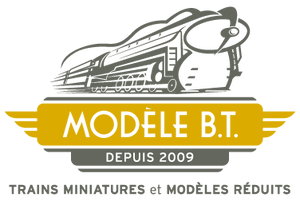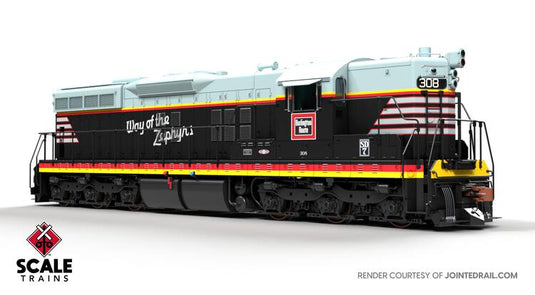Road Number Specific ScaleTrains
All-new model
New roadname
New paint scheme
New road numbers
Era: 1953 to Late-1960s
Series 308 to 324, built August-October 1953
CB&Q 308
Model badge placed on equipment boxes
Small cab numbers
F on lower yellow stripe
CB&Q 311
Model badge placed on step boxes
Larger cab numbers
F on middle red stripe
CB&Q 314
Model badge placed on equipment boxes
Small cab numbers
F on middle red stripe
CB&Q 315
Model badge placed on step boxes
Small cab numbers
F on lower yellow stripe
Fully-assembled
Multiple road numbers
LED-illuminated ground lights on both sides of locomotive*
LED-illuminated walkway lights on hood ends *
LED-illuminated Mars SBWR-2-300 dual signal light with clear lens at top and red lens at bottom, mounted to a bracket on front and rear hood ends*
LED-illuminated, tri-color front and rear, door-mounted class light housings (SD7)**
High short hood and long hood end number boards
Front and rear multiple unit (MU) hose catch boxes with pointed debris deflector
5-hose multiple unit (MU) hose clusters with silver gladhands
Semi-scale “cast” style coupler buffer equipped with durable metal semi-scale Type E knuckle couplers
Front and rear straight uncoupling levers with retrofitted straight grab handles
As-delivered pilot faces without uncoupling lever loop notches
Pilot-face mounted MU and field loop receptacles, left side
Standard SD7 stepwells (inset top and middle step) with poling pockets
“Pipe” style handrail stanchions without end gangways
No drop steps
Scale sectioned treadplate detail with EMD “dot” style pattern
High short hood with steam generator intake and exhaust on roof
Standard sub-base
Standard sidesills with louvered access doors on right side, and recessed charging receptacle on left side
Model badge placed on equipment boxes
Early-style EMD LED-illuminated headlight housing with lenses, front and rear
Cab with “retractable” type armrests
Detailed cab interior with separate floor, rear wall, seats, and early control stand, short-hood forward operation
Sliding cab side windows
Tall clear wind wings mounted fore and aft of cab side window on both sides of cab
Standard EMD sunshades with long sunshade tracks
Lost-wax brass cast dual Leslie A-200 Tyfon horns on long hood roof behind cab, facing front and rear
No radio antennas
Standard bolted electrical cabinet roof hatch
Separately-applied, tapered exhaust stacks
Dynamic brake housing with dual 36” fans
See-through dynamic brake intake grills with resistor grids behind intake vanes
Separately-applied photoetched radiator intake screens with intake shutters underneath
See-through 36” fan housings with separate fans, radiator core detail, and hood roof plumbing
Winterization hatch over #1 radiator fan
Separately-applied sand fill hatches
Detailed EMD Flex-i-Coil “C1” trucks with separately applied brake plumbing, brake cylinders, and flexible neoprene rubber sanding lines
Dimensionally accurate truck centers
Speed recorder mounted to second axle on left front truck sideframe
Standard EMD bell mounted on end of rear fuel tank
Underbody air filter details
Single 1,200-gallon water tank at front, and single 1,200-gallon fuel tank mounted to the rear with dual staggered sight glasses per side
Factory-applied wire grab irons, end ladders, photoetched lift rings, windshield wipers, trainline hoses with silver gladhands, signal hoses with silver gladhands, air tanks with plumbing, and more
Motor with 5-pole skew wound armature
Dual flywheels
All-wheel drive
All-wheel electrical pick-up
Directional LED-illuminated headlights
Printing and lettering legible even under magnification
Operates on Code 70, 83, and 100 rail
Packaging safely stores model
Minimum radius: 18”
Recommended radius: 22”
DCC & sound equipped locomotives also feature:
ESU LokSound 5 DCC & Sound decoder with “Full Throttle” feature
Two (2) cube-type speakers
Prime mover sound
16-cylinder 567B prime mover sound
ESU designed “PowerPack” with two super capacitors***
Operates on both DC and DCC layouts
DC/DCC & sound-ready locomotives also feature:
Operable on DC layouts
DCC-ready with 21-pin connector
* Lighting features operate when using an ESU decoder with appropriate programming while operating using DCC
** Class lights illuminate in white color only in DC operation. Access and changing colors requires an ESU decoder with appropriate programming while operating using DCC
***“PowerPack” feature only compatible with appropriately programmed ESU decoders operating on a DCC layout
Road Number Specific ScaleTrains
All-new model
New roadname
New paint scheme
New road numbers
Era: 1953 to Late-1960s
Series 308 to 324, built August-October 1953
CB&Q 308
Model badge placed on equipment boxes
Small cab numbers
F on lower yellow stripe
CB&Q 311
Model badge placed on step boxes
Larger cab numbers
F on middle red stripe
CB&Q 314
Model badge placed on equipment boxes
Small cab numbers
F on middle red stripe
CB&Q 315
Model badge placed on step boxes
Small cab numbers
F on lower yellow stripe
Fully-assembled
Multiple road numbers
LED-illuminated ground lights on both sides of locomotive*
LED-illuminated walkway lights on hood ends *
LED-illuminated Mars SBWR-2-300 dual signal light with clear lens at top and red lens at bottom, mounted to a bracket on front and rear hood ends*
LED-illuminated, tri-color front and rear, door-mounted class light housings (SD7)**
High short hood and long hood end number boards
Front and rear multiple unit (MU) hose catch boxes with pointed debris deflector
5-hose multiple unit (MU) hose clusters with silver gladhands
Semi-scale “cast” style coupler buffer equipped with durable metal semi-scale Type E knuckle couplers
Front and rear straight uncoupling levers with retrofitted straight grab handles
As-delivered pilot faces without uncoupling lever loop notches
Pilot-face mounted MU and field loop receptacles, left side
Standard SD7 stepwells (inset top and middle step) with poling pockets
“Pipe” style handrail stanchions without end gangways
No drop steps
Scale sectioned treadplate detail with EMD “dot” style pattern
High short hood with steam generator intake and exhaust on roof
Standard sub-base
Standard sidesills with louvered access doors on right side, and recessed charging receptacle on left side
Model badge placed on equipment boxes
Early-style EMD LED-illuminated headlight housing with lenses, front and rear
Cab with “retractable” type armrests
Detailed cab interior with separate floor, rear wall, seats, and early control stand, short-hood forward operation
Sliding cab side windows
Tall clear wind wings mounted fore and aft of cab side window on both sides of cab
Standard EMD sunshades with long sunshade tracks
Lost-wax brass cast dual Leslie A-200 Tyfon horns on long hood roof behind cab, facing front and rear
No radio antennas
Standard bolted electrical cabinet roof hatch
Separately-applied, tapered exhaust stacks
Dynamic brake housing with dual 36” fans
See-through dynamic brake intake grills with resistor grids behind intake vanes
Separately-applied photoetched radiator intake screens with intake shutters underneath
See-through 36” fan housings with separate fans, radiator core detail, and hood roof plumbing
Winterization hatch over #1 radiator fan
Separately-applied sand fill hatches
Detailed EMD Flex-i-Coil “C1” trucks with separately applied brake plumbing, brake cylinders, and flexible neoprene rubber sanding lines
Dimensionally accurate truck centers
Speed recorder mounted to second axle on left front truck sideframe
Standard EMD bell mounted on end of rear fuel tank
Underbody air filter details
Single 1,200-gallon water tank at front, and single 1,200-gallon fuel tank mounted to the rear with dual staggered sight glasses per side
Factory-applied wire grab irons, end ladders, photoetched lift rings, windshield wipers, trainline hoses with silver gladhands, signal hoses with silver gladhands, air tanks with plumbing, and more
Motor with 5-pole skew wound armature
Dual flywheels
All-wheel drive
All-wheel electrical pick-up
Directional LED-illuminated headlights
Printing and lettering legible even under magnification
Operates on Code 70, 83, and 100 rail
Packaging safely stores model
Minimum radius: 18”
Recommended radius: 22”
DCC & sound equipped locomotives also feature:
ESU LokSound 5 DCC & Sound decoder with “Full Throttle” feature
Two (2) cube-type speakers
Prime mover sound
16-cylinder 567B prime mover sound
ESU designed “PowerPack” with two super capacitors***
Operates on both DC and DCC layouts
DC/DCC & sound-ready locomotives also feature:
Operable on DC layouts
DCC-ready with 21-pin connector
* Lighting features operate when using an ESU decoder with appropriate programming while operating using DCC
** Class lights illuminate in white color only in DC operation. Access and changing colors requires an ESU decoder with appropriate programming while operating using DCC
***“PowerPack” feature only compatible with appropriately programmed ESU decoders operating on a DCC layout


